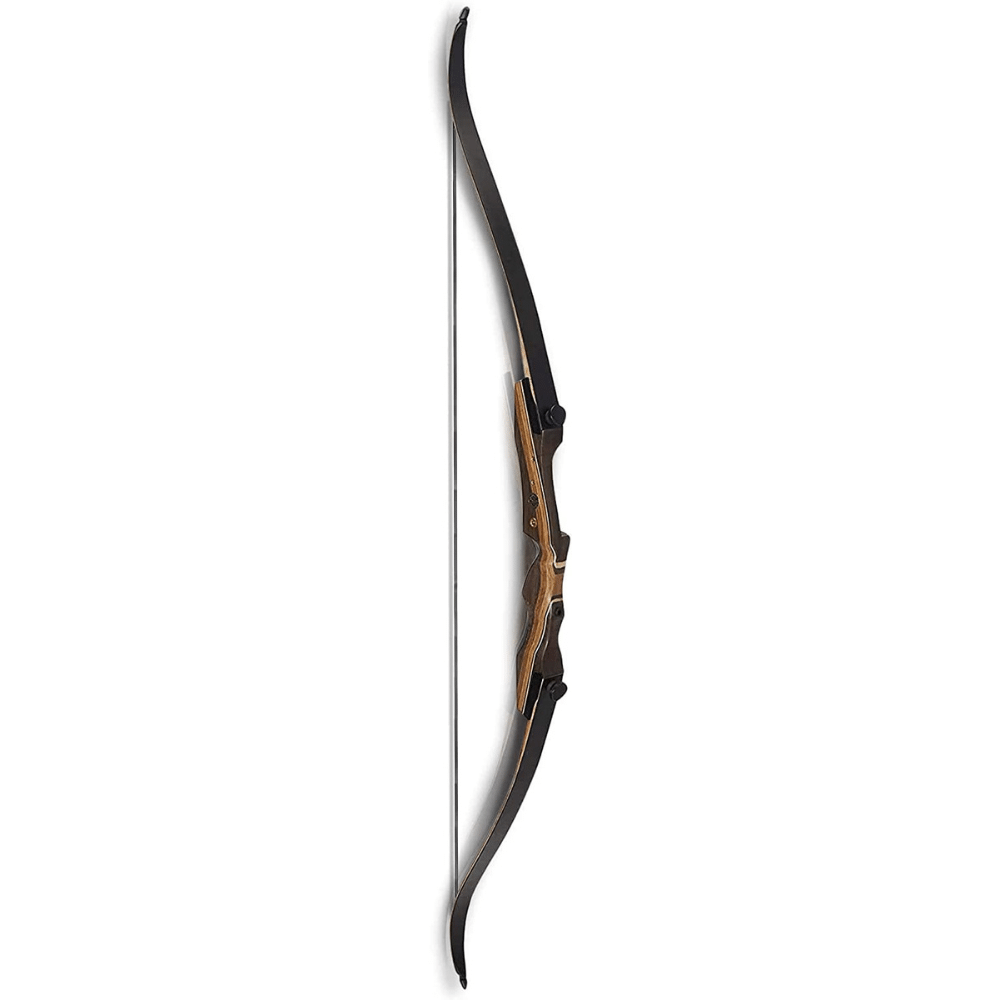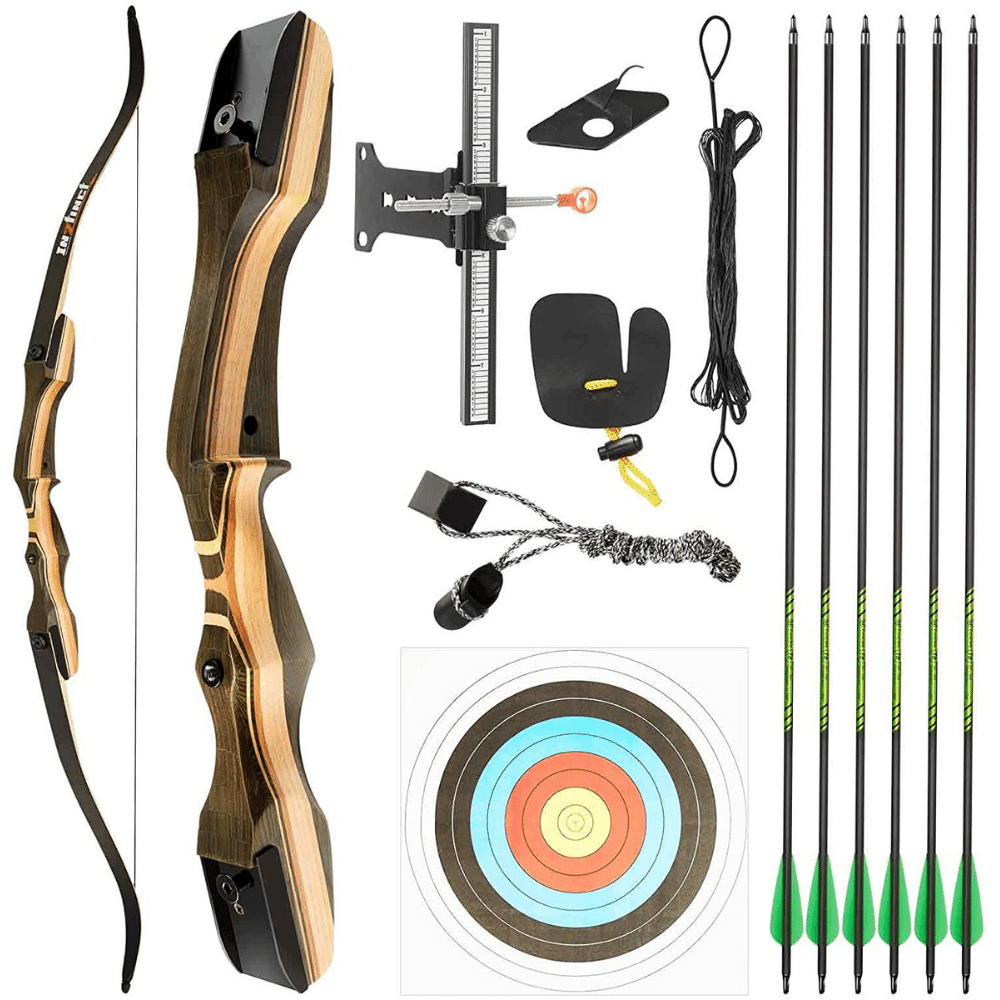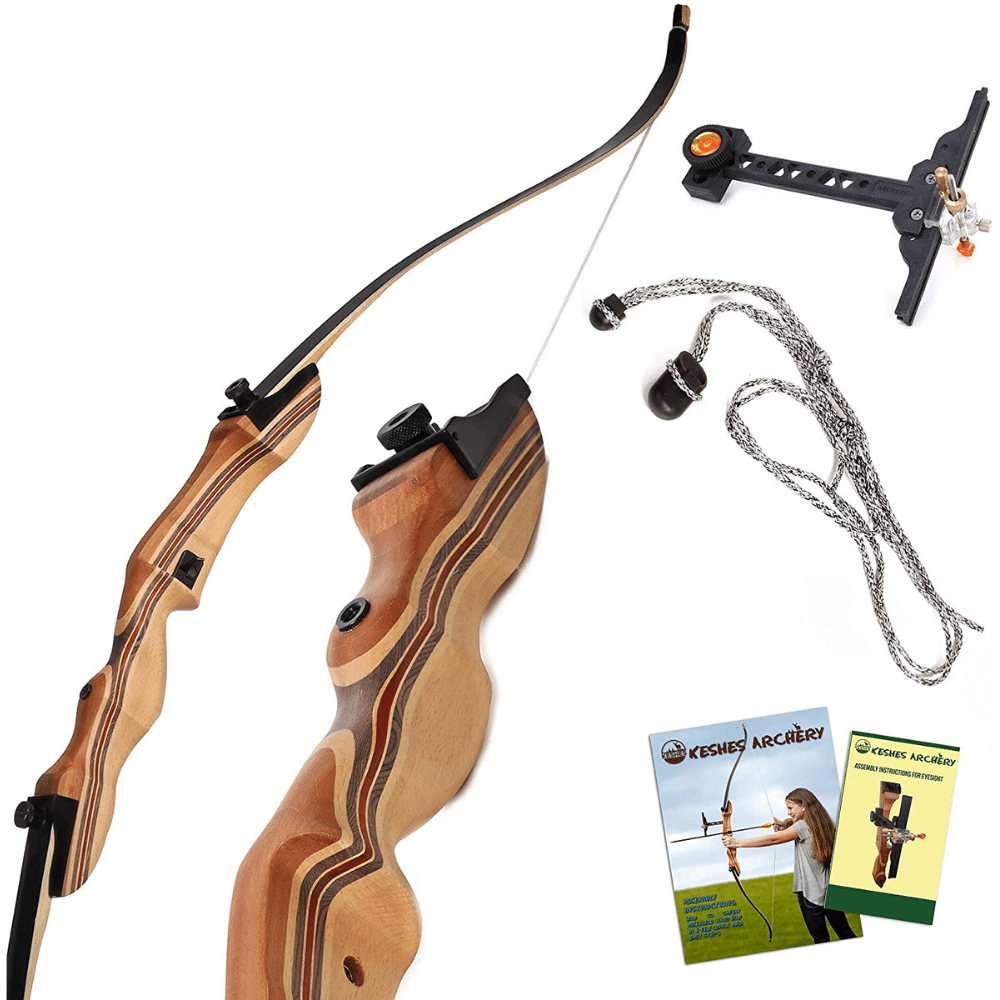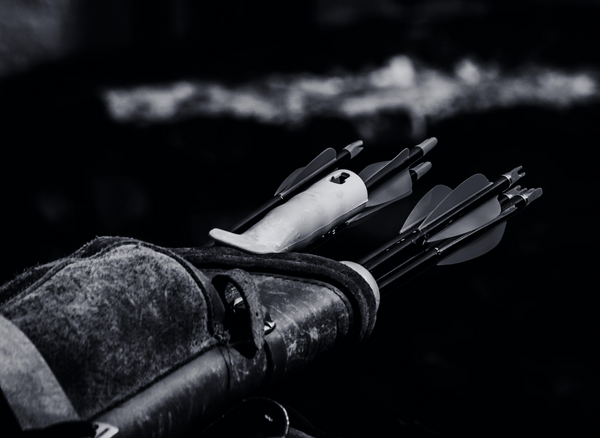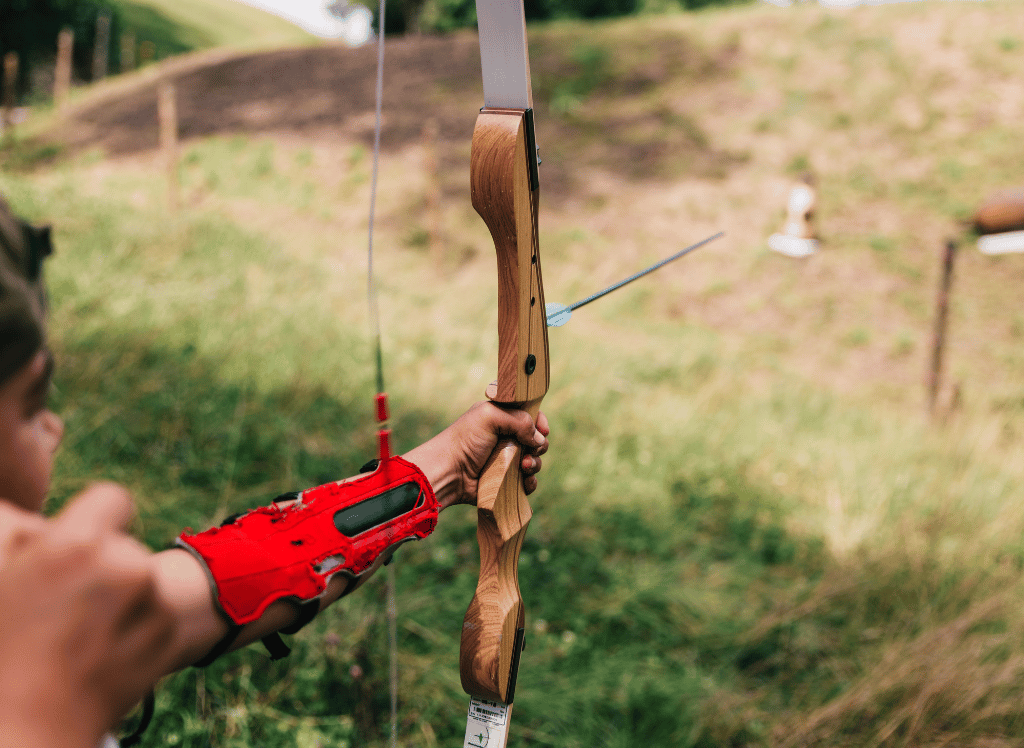Looking for the best bow to start?
There are so many different types of bows available on the market, it can be hard to know which one is best for you. That's where we come in! We'll help you find the perfect bow for your next outdoor excursion.
Bows come in all shapes and sizes, and each one has its own unique set of features. There are recurve bows, longbows, hunting bows, compound bows, crossbows. Whether you're looking for a bow that's easy to transport or one that can handle any terrain, we've got you covered. We'll help make sure you get the most out of your archery experience with the perfect bow for your needs.
For a beginner archer looking to get into archery, the best bow is a recurve bow. A recurve bow combines traditional craftsmanship with modern-day technology, giving new archers access to quality gear without having to break the bank. Recurve bows are lightweight and easy to handle even for those who have never shot before. They also tend to be easier to learn, allowing you to learn the basics. In addition, they require less maintenance as there are fewer moving parts involved.
Finding Your Perfect Beginner Recurve Bow
Ah, the joy of picking up archery for the first time. Whether you want to feel like Hawkeye or simply land bullseyes at your local range, archery is an incredibly satisfying hobby. You've decided to take the leap and buy your own recurve bow. So, what should you be looking for? Y'all should shoot for a few things when looking for your first bow.
1. Draw Weight: The draw weight of a bow refers to the amount of force required to pull a bowstring back to its full draw length. This is a crucial element for beginners to consider because it determines the amount of force you'll need to apply to the bow with each shot. You'll want to find a bow with a draw weight that's comfortable for you to handle. A helpful rule of thumb is that your draw weight should be about 10-15 pounds lighter than your own body weight.
2. Length and Weight: Another vital aspect to keep in mind when choosing a beginner recurve bow is the dimensions of the bow itself. The length and weight of the bow will determine how easily you can maneuver and shoot it. Recurve bows range from 48" to 70" in length, but for beginners, a bow between 62" to 66" is recommended. Similarly, the weight of the bow should be something that's comfortable for you to hold with your arms extended. As a beginner, it's best to aim for something between 2.5 to 3.5 pounds.
3. Takedown vs One-Piece: Beginner bows typically come in one of two varieties: takedown or one-piece. A takedown bow is designed to be taken apart at the limbs from the riser, which allows the bow to be transported more easily. A one-piece bow, on the other hand, is a single unit. Takedown bows are ideal for beginners because they can be upgraded or repaired more easily, and they tend to be less expensive than one-piece bows.
4. Skill Level: Your own level of experience is a crucial factor. Beginner bows are designed to be forgiving and easy to use, but some bows may still be more challenging than others. For example, a bow that has a higher draw weight may still be too challenging for someone who is just starting, whereas a bow with a lower draw weight may be too easy for someone who has been shooting for several months. Consider your level of experience and how quickly you're likely to progress in the sport.
How We Choose the Best Archery Bow 🏹
Yes, it can be hard to find the perfect archery bow for your needs. You might not have the time to read through hundreds of reviews online, or you might not know where to start. Most people give up after a few minutes of research because it's just too hard. They don't want to spend hours reading reviews and comparing products.
I've done the hard work for you and found a few bows that are worth your investment.
Other Good Stuff to Know
Archery is a great way to help you experience the outdoors. Whether you are a beginner or want to improve on your bow hunting skills. Aside from being fun, other benefits of the sport is that it helps you focus and improves your coordination.
Here's an intro video for you beginners:
Best beginner recurve bow
Do you want to get outdoors and have some fun? Do you want to be like Hawkeye from the Avengers? Or Katniss from the Hunger Games? Well, then you need a Samick Sage Archery Recurve Bow!
This flagship bow is beautiful, with great attention to detail. These are lightweight bows with a riser grip that feels natural. It's really quiet and accurate. Great fun, relaxing, and a good reason to get outdoors. It has plenty of options for accessories. But it's so fun! And if the world goes to hell, you'll have a hunting bow to kill zombies or hunt or forage for food. Excellent quality. Great build.
Bow Features 🏹
The Samick Sage recurve bow is a great choice for anyone looking for a high-quality recurve bow. It features a 62" length, 28" draw lengths, and 25-60 lb draw weight. It also includes a riser, 2 fiberglass laminated limbs, 14 strands dacron bowstring, stick on arrow rest, and assembly instructions. The limbs are interchangeable and can be purchased separately. The riser is designed with lightweight maple wood and a comfortable ergonomic grip; easy to hold. The recurve bow also features pre-installed threaded brass bushings for various attachments and upgrades, such as a brass plunger, stabilizer, sight, quiver, and bow fishing reel.
Best Value Bow
Looking for a great way to get into archery? Look no further than the TIDEWE Recurve Bow and Arrow Set. This complete kit has everything you need to start shooting, and is easy to set up and use. This great budget bow is well balanced and feels great in the hand, and shoots arrows fast and accurately. With great quality and an unbeatable price, this is the perfect choice for anyone wanting to try out recurve archery. So don't wait any longer, get the TIDEWE Recurve Bow and Arrow Set today!
Bow Features 🏹
This recurve bow is the perfect choice for anyone looking for a reliable and powerful bow. The wooden core and strong limbs provide a powerful 16-strand dacron fabric bow string, making it easy to focus on hitting your target. The ergonomic and unique design of the riser makes it comfortable to hold, even for extended periods. The recurve bow is also easy to assemble and comes with everything you need to get started, including an arrow rest, finger guard, target, bow stringer, and six carbon arrows with removable field tips.
Great beginner to Intermediate 🏹
The KESHES Recurve Bow is a great bow. It's very light, but rock solid, and has different draw weights for targets. The Keshes bow also comes with a stringer, arrow rest, and sight - making it a great value for the price. If you're looking for a great beginner bow to intermediate bow, the Keshes Recurve Bow is the perfect choice!
Bow Features 🏹
If you're looking for other bows, look no further than the KESHES recurve bow! This bow is 62" long and can accommodate a maximum draw of 29", making it perfect for youth or adult archers. The hard maple limbs are laminated with fiberglass on both sides for superior durability, and the interchangeable limbs make this bow supremely versatile. Additionally, the cleanly designed limb bolts make changing limbs quick and easy, while the sturdy riser construction can accommodate multiple bow weights and limb weights. Plus, the ergonomically designed grip riser and included arrow rest make this bow extremely user-friendly. Finally, the recurve string is made of 14 strands of Dacron for superior strength and performance, and the brass bushings allow for various attachments and upgrades. So if you're looking for a top-of-the-line recurve bow, choose the KESHES recurve bow!
Bow FAQs
You've decided you want to get into archery, but you don't know where to start. It can be really confusing when you're starting out in a new sport. There are so many different types of bows and arrows and accessories, it's hard to know what you need.
We've put together this list of the most frequently asked questions about archery bows to help make your decision easier.
What type of bow should a beginner use?
When starting out, a recurve bow is a good option. It has a simpler design than other types of bows, and it's easier to use and maintain. Additionally, recurve bows are often recommended for beginner archers because they're more forgiving of errors in technique.
Another factor to consider when choosing a bow is your draw weight. This is the amount of force you need to apply to the bowstring in order to pull it back fully—the higher the draw weight, the more power the bow will have. A good starting point for beginners is around 25 pounds for a smooth draw, but you may want to adjust this depending on your strength and shooting style. A bow press can also be used to help adjust tension.
What is the draw weight of a bow?
The draw weight of a bow is the amount of force that is required to pull the bowstring back for a full draw extension. It's typically measured in pounds or kilograms. A higher draw weight means that more force is needed to pull the bowstring back, and this results in a greater shooting power. Most bows are designed for a draw weight of between 30 and 80 pounds.
What are the types of archery bows?
There are a few different types of archery bows, each with its benefits and drawbacks. The most common types are longbows, recurve bows, and a compound bows.
Longbows are the simplest type of bow and have been used for centuries. They're typically made from a single piece of wood and are balanced more evenly than other types of bows. This makes them easy to use and very accurate. However, they can be difficult to draw without proper technique and aren't as powerful as other types of bows.
Recurve bows are more curved than longbows, which gives them more power. They're also easier to draw since the string doesn't have to be drawn as far back. However, they can be slightly less accurate than longbows since the weight is distributed unevenly.
Compound hunting bows are the most complex and efficient bow, and is designed for maximum power and accuracy. It has a system of pulleys and cables that help to draw the string back, making them much easier to use than other types of bows.
What is the best string for a bow and arrow?
There are a few different types of string that can be used for a bow and arrow, including nylon, Kevlar, and Dacron. Each type of string has its advantages and disadvantages, so it's important to choose the right one for your needs. Nylon is durable and elastic, making it a good choice for beginners. Kevlar is stronger than nylon and doesn't stretch as much, making it ideal for experienced archers. Dacron is the lightest type of string, making it a good choice for beginners also. Whichever type of string you choose, be sure to get one that is the proper length and thickness for your bow.
What skills are used in archery?
Archery is a sport that requires a great deal of skill and practice to master. There are several key skills involved in archery, including hand-eye coordination, focus, and muscle control.
Hand-eye coordination is vital for aiming at a target and hitting your mark. You need to be able to align your peep sight with the bow and arrow so that you can accurately hit the target. This takes a lot of practice and concentration.
Focus is another important skill in archery. You need to be able to block out distractions and focus on the task at hand, which is hitting the target. This takes a great deal of mental concentration and discipline.
What are bows made of?
Bows are typically made of a variety of materials, including wood, fiberglass, and carbon fiber. The choice of material depends on the type of bow being made and its intended use. For example, wood is often used to make traditional bows, while fiberglass and carbon fiber are more common in modern bows.
What type of arrow is the best to shoot with?
Most individuals assume that there is one type of arrow that reigns supreme over all others, but the fact of the matter is that different types of arrows are better for different types of shooting. Before going out and purchasing a new quiver full of arrows, it’s important to know what kind of arrow you need for the specific task at hand. Crossbow hunters, for example, have very different needs than those who bow hunt with traditional longbows or recurve bows. Even if you’re just target practicing, the type of arrow you select can make a huge difference in your accuracy and success.
There are three main types of arrows: wood arrows, aluminum arrows, and carbon Arrows. Each type has its own set of advantages and disadvantages. Wood arrows are the oldest type of arrow and are still used by some traditional bow hunters. They are typically made from cedar or pine and can be very durable. Aluminum arrows are a more modern option and are often used by bowhunters and target shooters alike. They’re lighter than wood arrows.
What are the different types of arrows?
When it comes to types of archery arrows, there are three main types: wood, fiberglass, and carbon.
Wood arrows are the most traditional type of arrow, and were the kind used by Native Americans. They're durable and relatively inexpensive, although they can be difficult to find in some parts of the country. Fiberglass arrows are a more modern option that offers some distinct advantages over wood arrows. They're lighter weight, which makes them easier to shoot, and they're also more flexible, which reduces the chance of breakage. Carbon arrows are the newest type of arrow on the market and offer even more benefits than fiberglass arrows. They're extremely lightweight and very strong, making them ideal for experienced archers.
Best Recurve Bow for Beginners
So, you’re interested in picking up archery? Great! Archery is a fun and challenging sport that can be enjoyed by people of all ages. Whether you’re looking to get into archery for the first time or are just looking for a new bow to add to your collection, we’ve got you covered. In this article, we’ll take a look at some of the best bows for beginners and provide tips on how to choose the right one for you. We also have a handy FAQ section where you can find the answers to most of your questions as beginner.
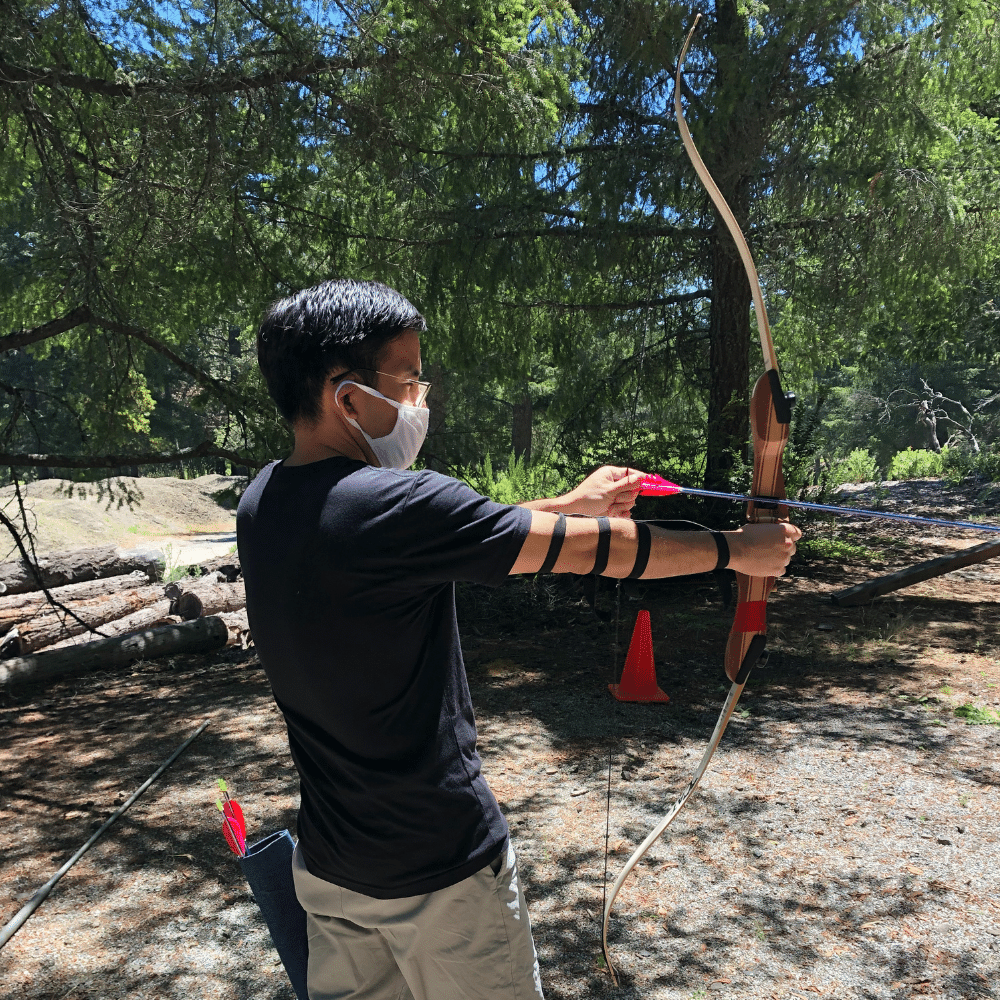
Aim high and let it fly
Some of the links on this website may generate an affiliate commission, at zero cost to you. As an Amazon Associate, we earn from qualifying purchases. Your subscription and associate links helps make this site possible; and allows Gold Medal Ratings to exist. Thank you!




